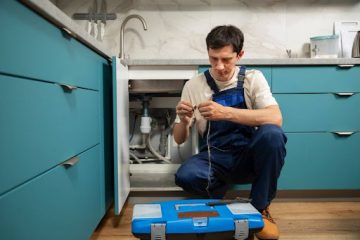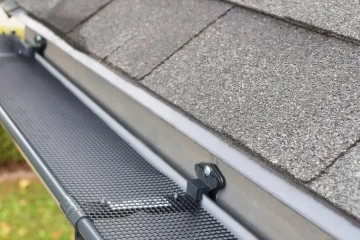Gas appliances are becoming increasingly popular in modern homes due to their efficiency, cost-effectiveness, and environmental benefits. However, installing these appliances requires careful planning, adherence to safety standards, and proper execution to ensure both functionality and safety.
In this article, we will explore the key considerations for gas appliance installation in homes to help homeowners make informed decisions and ensure a smooth installation process.
ProActive Prevention provides essential services focused on proactive safety measures and expert professionals to assist homeowners in creating a safe and risk-free environment during the installation and operation of gas appliances in their residences.
Understanding the Types of Gas Appliances
Before diving into the installation process, it’s essential to understand the different types of gas appliances available for homes. Common gas appliances include:
- Gas stoves and ovens
- Gas water heaters
- Gas furnaces
- Gas fireplaces
- Gas dryers
Each type of appliance has specific installation requirements and considerations, so it’s crucial to choose the right appliance for your needs and ensure it is compatible with your home’s existing gas infrastructure.
Assessing Your Home’s Gas Infrastructure
Before installing a new gas appliance, you need to assess your home’s existing gas infrastructure. This involves:
- Checking the capacity of your gas meter and supply line is crucial before installing a new gas appliance. It’s essential to ensure that your existing gas infrastructure can handle the additional load to prevent overloading, pressure issues, or system failures. Consulting with a professional can help you accurately assess and upgrade your gas meter and supply line if necessary.
- Inspecting the condition of gas pipes and fittings is crucial prior to installation. It’s essential to closely examine them for signs of wear, corrosion, or damage such as cracks, leaks, or rust. Any compromised components should be repaired or replaced by a qualified professional to prevent gas leaks and ensure safe and efficient operation of the gas appliance.
- Verifying the location of gas shut-off valves: Locate the main gas shut-off valve and individual shut-off valves for each appliance to ensure easy access in case of emergencies.
Adhering to Local Codes and Regulations
Gas appliance installation is subject to local building codes and regulations designed to ensure safety and compliance with industry standards. Before proceeding with the installation, it is essential to:
- Familiarizing yourself with local building codes and regulations governing gas appliance installation is crucial to ensure compliance with legal requirements and industry standards. These codes and regulations outline specific guidelines and procedures that must be followed to ensure the safety, functionality, and efficiency of gas appliances within homes.
- Obtaining necessary permits and approvals from local authorities is essential to ensure compliance with legal requirements when installing gas appliances. These permits typically involve inspections to verify that the installation meets safety standards and local building codes, ensuring the protection of occupants and property against potential hazards and liabilities.
- Hiring licensed and certified professionals for gas appliance installation is crucial for ensuring a compliant and safe process. These experts possess the necessary expertise and knowledge about local codes and regulations, ensuring that the installation meets all legal requirements and safety standards, reducing the risk of potential hazards and ensuring optimal performance of the appliance.
Selecting the Right Location for Installation
Choosing the right location for your gas appliance is crucial for both functionality and safety. Consider the following factors when selecting a location for installation:
- Accessibility: Ensure that the appliance is easily accessible for maintenance, servicing, and emergency shut-off.
- Ventilation: Provide adequate ventilation to prevent the accumulation of carbon monoxide and ensure proper combustion.
- Clearance: Maintain proper clearance distances as specified by the manufacturer to prevent overheating and fire hazards.
- Compatibility with existing infrastructure: Ensure that the chosen location is compatible with your home’s existing gas lines, electrical wiring, and plumbing.
Hiring Qualified Professionals for Installation
Gas appliance installation is not a DIY project and should be performed by qualified professionals who have the necessary skills, knowledge, and experience to ensure a safe and compliant installation. When hiring professionals:
- Verify their credentials, licenses, and certifications to ensure they are qualified to perform gas appliance installation.
- Ask for references and check reviews to gauge their reputation and reliability.
- Request a detailed estimate outlining the scope of work, materials, labor costs, and timeline for the installation.
Ensuring Proper Ventilation and Safety Measures
Proper ventilation is essential for gas appliances to operate safely and efficiently. Inadequate ventilation can lead to the accumulation of harmful gasses like carbon monoxide, posing a significant health risk to occupants. To ensure proper ventilation:
- Install venting systems as per manufacturer’s specifications and local building codes.
- Regularly inspect and maintain vents to prevent blockages and ensure proper airflow.
- Install carbon monoxide detectors near gas appliances and sleeping areas to provide early warning of potential hazards.
Testing and Commissioning the Gas Appliance
Once the gas appliance is installed, it is crucial to test and commission the appliance to ensure it is functioning correctly and safely. This involves:
- Checking for gas leaks by performing a pressure test on the gas lines and connections.
- Testing the appliance’s performance and functionality to ensure it meets the manufacturer’s specifications.
- Calibrating and adjusting the appliance as needed to optimize performance and efficiency.
- Providing homeowners with instructions on how to operate the appliance safely and efficiently.
Regular Maintenance and Servicing
Regular maintenance and servicing are essential to ensure the longevity, efficiency, and safety of your gas appliances. Establish a regular maintenance schedule and:
- Inspect gas lines, connections, and fittings for signs of wear, corrosion, or damage.
- Clean and inspect vents, burners, and other components to remove any debris or obstructions.
- Test and calibrate the appliance to ensure it continues to operate safely and efficiently.
- Address any issues or concerns promptly to prevent potential hazards and costly repairs.
Conclusion
Gas appliance installation in homes requires careful planning, adherence to safety standards, and proper execution to ensure functionality and safety.
By understanding the different types of gas appliances, assessing your home’s gas infrastructure, adhering to local codes and regulations, selecting the right location for installation, hiring qualified professionals, ensuring proper ventilation and safety measures, testing and commissioning the appliance, and establishing a regular maintenance schedule, homeowners can make informed decisions and ensure a smooth installation process.
Remember, safety should always be the top priority when installing and operating gas appliances in homes.




